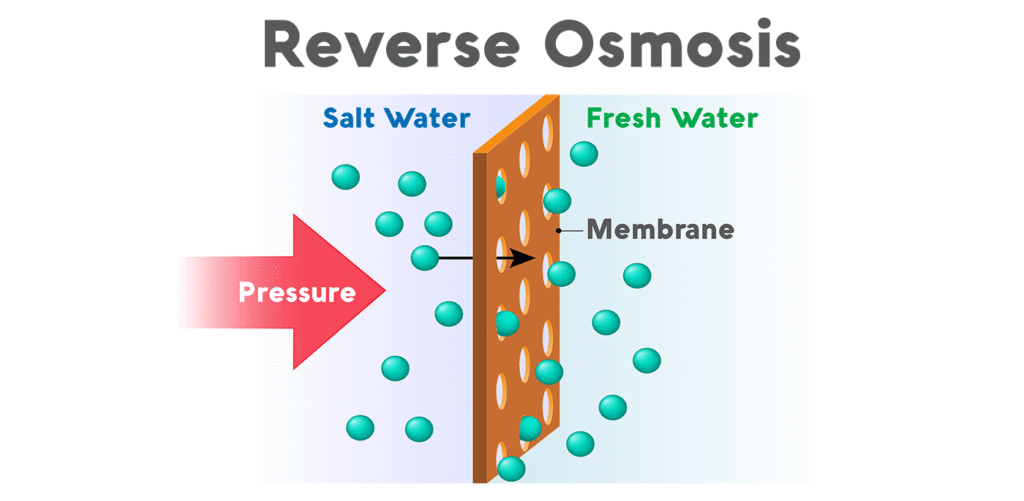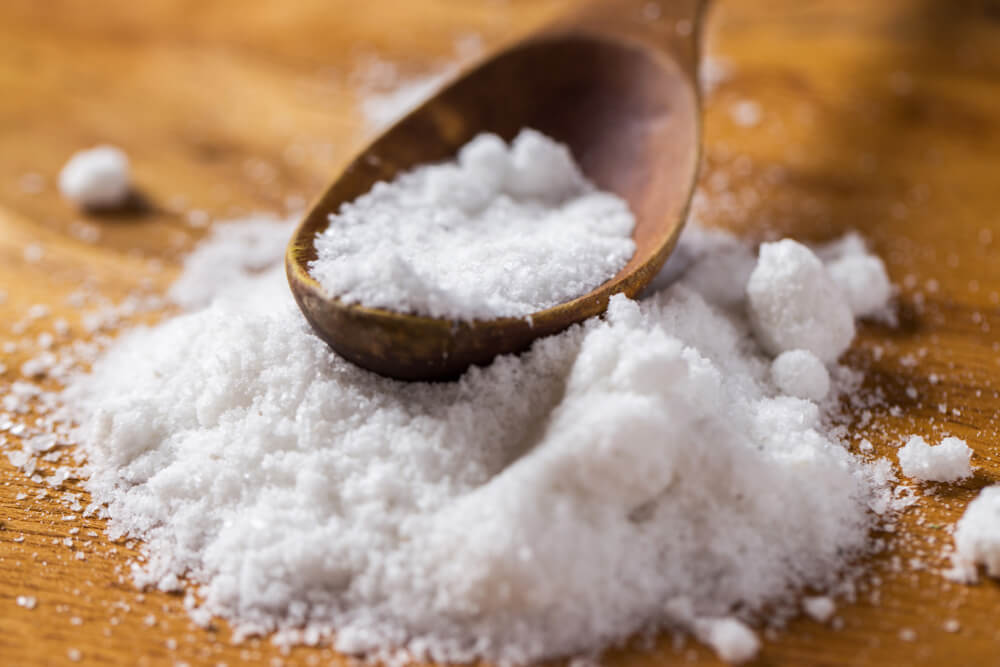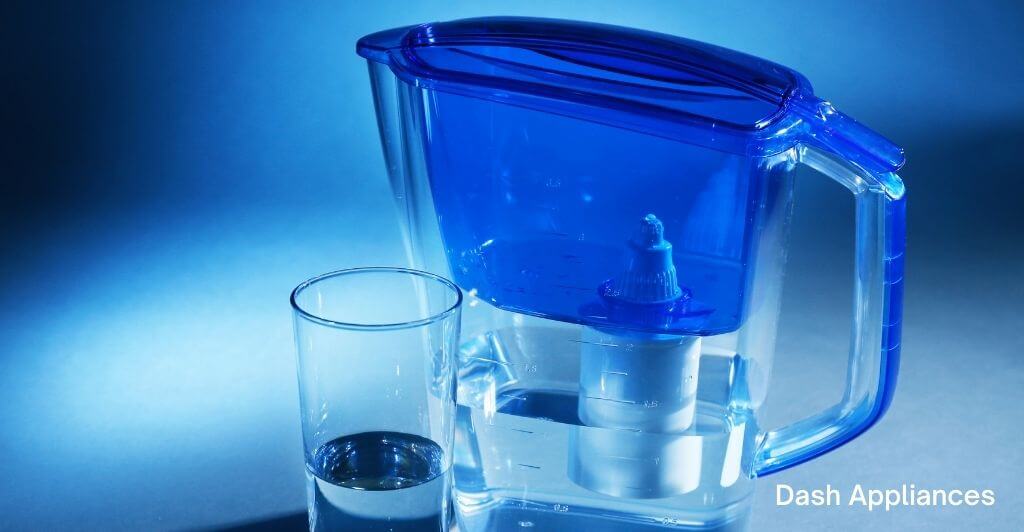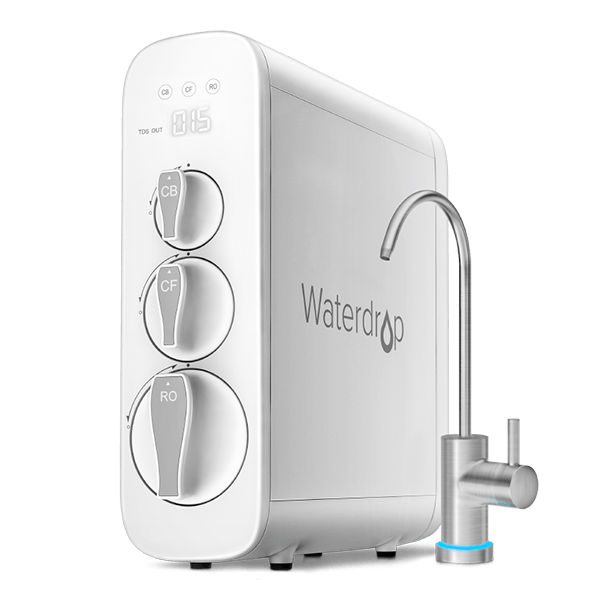We all want to drink the cleanest water possible. Reverse osmosis is a process that removes 99% of contaminants from water, but this can lead to remineralization problems.
So how do you remineralize your RO treated tap water? This blog post will discuss how to remineralize water after reverse osmosis with a little bit of effort and only small amounts of money.
What is Reverse Osmosis?
Reverse Osmosis (RO) is a treatment method for drinking water where pure water is produced by passing water through a membrane filter with pores sized smaller than those found in our cells.
This means any impurities are removed, and the water becomes more purified.

Reverse osmosis filters are better at removing particles from solution than filtration or distillation techniques.
How Does Reverse Osmosis Water Filter System Work?
Reverse osmosis (RO) systems work by passing water through a semi-permeable membrane. The membrane allows pure water molecules to pass through while blocking impurities like salt, minerals, and bacteria.

A reverse osmosis system consists of two main parts: a water reservoir and a membrane system.

The membrane system contains a semi-permeable membrane that separates the clean water from the wastewater. The membrane is supported by a series of filters that protect it from contamination.
The pumps force the water under pressure through the membranes to separate out any contaminants like dissolved solids and bacteria. The resulting water is highly pure and requires little or no further treatment before being used in homes or businesses.
What are the Health Consequences of RO Water?
While many people believe that reverse osmosis water filters remove almost all of the bad things from your tap water, there are still some health consequences that come along with having an RO system installed in your home.

For example, even though an RO system removes 99% of the contaminants from your water, it doesn’t necessarily mean that you won’t get sick. This is because some contaminants remain in the filtered water, which could cause illness.
One of the biggest concerns with reverse osmosis water filtration is that it can build up the chlorine in your pipes. Chlorine is used to kill off bacteria and viruses, but it also has the potential to damage your plumbing. When chlorine builds up inside your pipes, it creates a thick layer of sediment that can block up your drains and toilets.
Another concern with RO water is that it may contain high fluoride levels. Fluoride is added to public water supplies to prevent tooth decay.
How to Remineralize Reverse Osmosis Water?
Concerned about Reverse Osmosis (RO) removing too many essential minerals that your body needs? Remineralizing reverse osmosis water is a good idea.
Remineralized RO water will have back some of the minerals that were removed during the purification process, such as calcium and magnesium. Here’s how you can remineralize your RO water…
1. Use a Water Softener
One of the best ways of how to remineralize water after reverse osmosis is to add a water softener to your home. A water softener works by adding calcium ions back into the water.
Calcium is one of the main components of bones and teeth, so it helps to keep them strong and healthy. Adding a water softener to reverse osmosis water helps restore its natural mineral content.
2. Add salt
Another way to remineralize your reverse osmosis water would be to add salt. While this isn’t necessary, it does help to restore the balance of minerals in your water. You can add table salt, sea salt, or kosher salt to your water.

3. Use Distilled Water
Some people recommend distilling your reverse osmosis purified water before storing it in the refrigerator. Doing this will eliminate any trace amounts of minerals that might have been leftover from the purification process.
4. Use a Reverse Osmosis Filtration System
There are many different types of reverse osmosis filtration systems available on the market today like the Waterdrop Reverse Osmosis Drinking Water Filtration System.
Waterdrop RO Drinking Water Filtration system
— Best overall RO water system
This tankless RO water filter system by Waterdrop comes with a 400 liters capacity, compact design, and smart faucet feature.
The Waterdrop reverse osmosis remineralization system uses PCC technology to activate the crystalline structure of minerals; it simulates the formation mechanisms of mineral spring to activate every mineral and guarantees the product’s quality.
Now you can drink healthy water straight at home with a safe product!
5. Use Ice Cubes
If you want to use ice cubes instead of distilled water, you can freeze your reverse osmosis filtered water. This method allows you to store your water without worrying about any minerals left behind.
6. Use a Deioniser Filter
In addition to removing minerals, deionisers also filter out other particles like dirt, dust, pollen, and hair. These filters are great for keeping your house clean and safe. However, they aren’t always effective at restoring minerals to your water.
7. Use an Alkaline pitcher
An alkaline pitcher is another option for remineralizing your reverse osmosis-treated water. It works by creating an acidic environment within the glass vessel. As the water sits in the pitcher, the pH level rises to 7.0.

At this point, the water becomes more alkaline than when it came into contact with the pitcher. The increase in alkalinity helps to neutralize the minerals removed during the reverse osmosis treatment.
8. Alter the RO water PH level with filter cartridges
Many reverse osmosis systems include a filter cartridge that alters the PH level of your water. The higher the PH level, the less likely your body will absorb the minerals removed from the water. With this method, you can alter your reverse osmosis system’s water’s PH level using a different filter cartridge.
Is It Unhealthy to Drink Demineralized Water?
While drinking demineralized water may seem appealing because it doesn’t contain any minerals, there’s no scientific evidence that shows that it’s unhealthy. Some experts say that drinking demineralized (or “soft”) water could be beneficial to your health.
Soft water is often recommended as a healthy alternative to regular tap water because it contains fewer contaminants. Soft water is typically found in areas where the local water source is naturally hard, such as underground aquifers. Because these sources don’t require chemicals or electricity to produce, they tend to be free of harmful pollutants.

In contrast, tap water requires chemical additives to make it suitable for human consumption. These additives can cause health problems if consumed regularly.
What Minerals should be in the Drinking Water
To ensure that you’re getting all of the essential nutrients your body needs, it’s important to know what minerals should be present in the water you drink.
According to the World Health Organization, the following are some of the minerals that should be included in water that we drink:
- Calcium
- Magnesium
- Sodium
- Potassium
- Bicarbonate
Conclusion
If you’re looking for an easy way to improve the quality of your home water supply, then remineralizing water after reverse osmosis might just be the best solution for you. Not only will it remove impurities like chlorine and fluoride, but it’ll also help restore the natural mineral content of your water.
For remineralization, you can simply start by adding salt to your water or using a RO system with remineralization built-in like in the Waterdrop RO System.
FAQs
How can I add minerals to RO water naturally?
You can add minerals back into your RO water by adding them directly to the tank. This method works well if you have access to a large quantity of water. However, this process takes time and requires constant attention. If you’d rather not wait around for hours, you might want to consider purchasing a mineral filter instead.
Is drinking reverse osmosis water bad for you?
While drinking demineralized or soft water may sound tempting because it doesn’t contain many minerals, little evidence suggests that it’s unhealthy. On the contrary, some researchers believe that drinking demineralized water could be beneficial for certain people suffering from kidney stones.
How do you Remineralize filtered water?
Remineralising filtered water isn’t as simple as adding minerals to the tank. It involves using different methods, including ion exchange resins, activated carbon filters, and reverse osmosis systems.
Can you add minerals back into filtered water?
Yes, you can add minerals back into filtered (RO) water. The easiest way to do so is by adding them directly to your tank. This method works great if you have access to lots of water.

